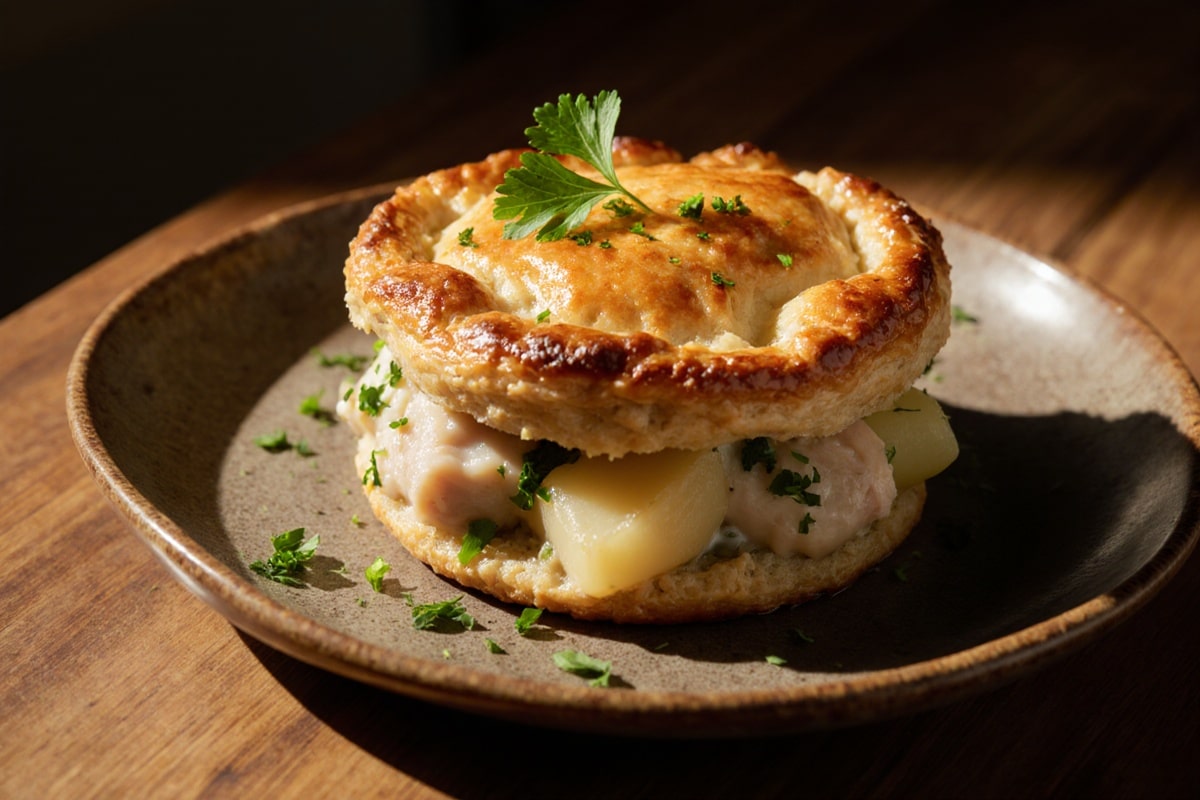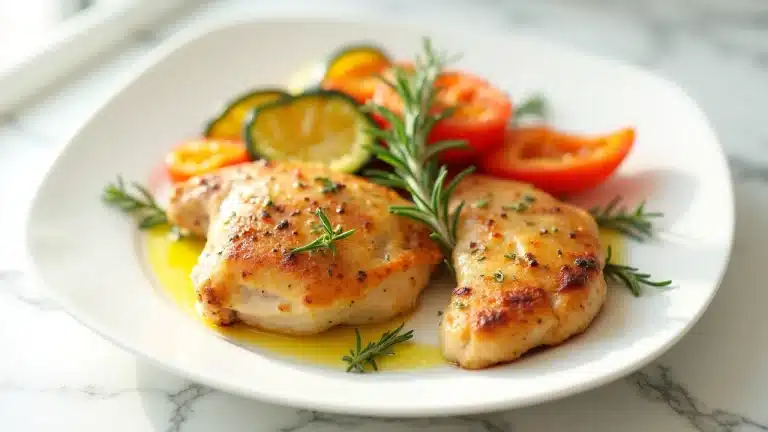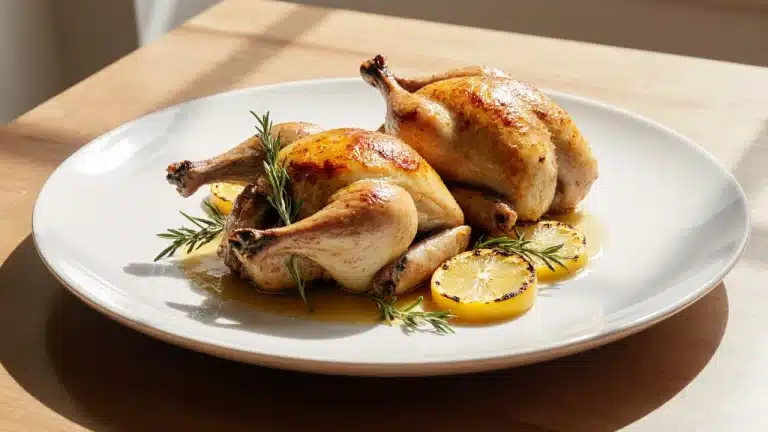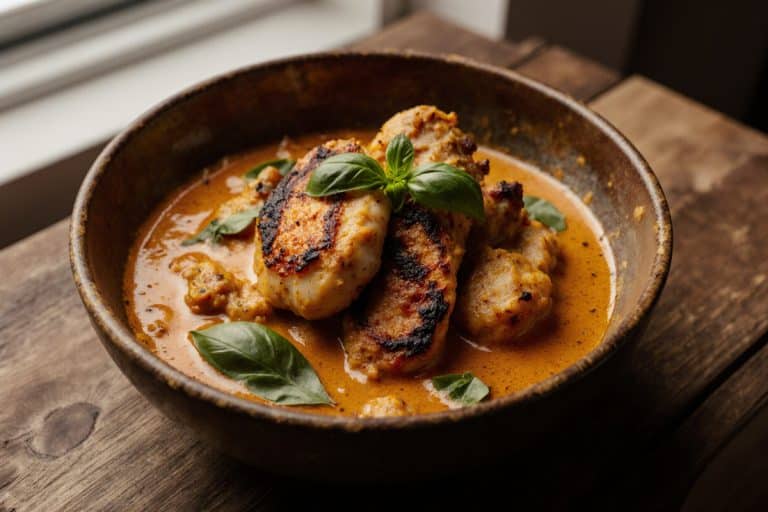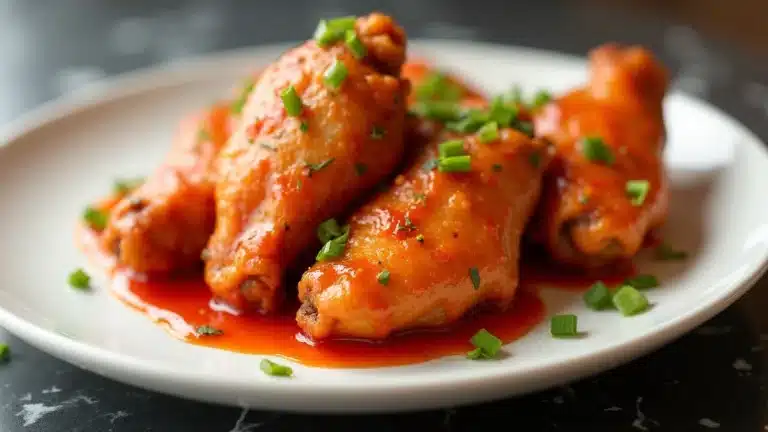Gordon Ramsay Chicken and Potato Pie Recipe
Gordon Ramsay chicken and potato pie isn’t just a meal; it’s a comforting hug served in a flaky, golden crust. I learned the hard way that soggy bottoms and overcooked chicken can ruin everything, but trust me, mastering this dish transforms your confidence in the kitchen. With the right ingredients and techniques, you save time and ensure a flavor-packed filling to impress anyone at your table. Let’s get those sleeves rolled up and dive into the savory joy of this classic pie—no pressure, just satisfaction for all your senses!

Ingredients and tools for gordon ramsay chicken and potato pie
Exact ingredients with precise weights and why they matter
You want clarity, not guesswork. For a 6–8 portion pie I use: 800 g boneless chicken thighs (or breasts, see swaps later), 800 g waxy potatoes (Maris Piper or Yukon Gold), 200 g carrots, 150 g celery, 2 medium onions (~200 g), 100 g unsalted butter, 50 g plain flour, 750 ml chicken stock, 150 ml double cream (optional), 30 g fresh parsley, 2 tsp dried thyme, 1 tbsp Dijon mustard, salt and black pepper to taste. For the pastry: 400 g shortcrust or puff pastry (store-bought is fine). These weights help give even cooking and a good filling-to-pastry balance.
Keep the butter chilled for pastry and use low-salt stock so you control seasoning. Weigh everything — it helps prevent a watery filling or pastry that’s too thick. If you don’t have scales, eyeballing will work, but results will vary.
Essential kitchen tools and oven settings
You don’t need Michelin toys, just the right kit. Grab a 23–25 cm (9–10 in) ovenproof pie dish or a 20 x 30 cm roasting tray, a heavy frying pan (cast iron is great), a saucepan for potatoes, a baking tray for the pastry lid, a sharp knife, a wooden spoon, and a kitchen thermometer. Use a rolling pin and a fork for docking shortcrust.
Preheat the oven to 200°C / 400°F (fan 180°C). For golden pastry, bake at this temperature for 25–35 minutes. Thermometer target: cooked chicken should hit 75°C / 165°F. Knowing the tools and temps cuts down on guesswork — and stress.
Stocks, sauces, and pantry backups
If your stock is weak, your pie will taste flat. Use 750 ml good-quality chicken stock (homemade or low-sodium). If you only have bouillon, dissolve 2–3 tsp granules in 750 ml hot water. For a creamier finish, stir in 150 ml double cream or 150 g crème fraîche at the end. The 50 g flour gives you a thickening base that firms up as it cools without turning gluey.
Keep pantry backups: Dijon mustard, dried thyme, bay leaf, Worcestershire sauce (1 tsp), and frozen puff pastry. Tip: if the sauce looks thin after resting, simmer 3–5 minutes to reduce; if too thick, whisk in up to 60 ml stock or cream.
Prep and mise en place for a flawless chicken and potato pie
How to prep the chicken for even cooking and safety
Trim excess fat and pat the chicken dry. Cut 800 g boneless chicken thighs into 2–3 cm pieces so they brown quickly and cook evenly. Season with 1 tsp salt and ½ tsp black pepper. Brown the pieces in 20 g butter and 1 tbsp oil over medium-high heat for 4–5 minutes until sealed and golden — don’t crowd the pan. Browning adds flavor; steaming gives you nothing.
After browning, rest the chicken on a plate while you make the sauce. Note: check a random piece with a thermometer — you’re not finishing it now, but if it’s already 75°C / 165°F you’ve overcooked it. Keep raw chicken chilled at ≤4°C until you start cooking.
Preparing the potatoes and vegetables with timing
Peel and dice 800 g waxy potatoes into 2–3 cm cubes. Parboil in salted water for 8–10 minutes until just tender when pierced; they should hold shape. Drain and let steam-dry for 2 minutes to remove surface moisture. Dice 200 g carrots, 150 g celery, and two onions; sweat them in 30 g butter over medium heat for 6–8 minutes until translucent but not colored.
Layering matters: par-cooked potatoes prevent a soggy bottom and match the chicken’s finish. If potatoes go cold, reheat briefly in a hot pan to remove surface moisture before assembling — wet spuds mean a watery filling.
Making the roux and building the filling step-by-step
Melt 50 g butter in the frying pan you used for the chicken, add 50 g plain flour and cook for 2 minutes to lose the raw flour taste. Gradually whisk in 750 ml hot chicken stock, scraping the brown bits from the pan. Add 1 tbsp Dijon mustard, 2 tsp dried thyme, 1 bay leaf, and simmer for 6–8 minutes until the sauce thickens enough to coat the back of a spoon.
Return the chicken and vegetables to the sauce and simmer gently for 4 minutes so the flavors marry. Finish with 150 ml double cream (optional) and 30 g chopped parsley. Consistency: the sauce should be spoonable, not pourable; it will firm up as it cools. Season with salt and pepper to taste.
Comparing cooking methods — which is best for gordon ramsay chicken and potato pie?
Traditional oven-baked pie — the reliable classic
Baking the assembled pie at 200°C / 400°F (fan 180°C) for 25–35 minutes gives the most consistent results: even heat crisps the pastry while the filling sets. If you use puff pastry, check after 20 minutes; you want a deep golden top. If the edges brown too quickly, tent with foil after 15 minutes.
For a classic chicken and potato pie, this method gives the best pastry-to-filling texture balance. Place the pie on a tray to catch spills and let it rest 10–15 minutes — that’s when the filling firms up and won’t scald mouths.
Stove-top to oven hybrid — quick sear, slow bake
If you’re short on time, start on the stove. Brown the chicken and vegetables, make the sauce, then assemble and transfer to a preheated oven at 200°C / 400°F for 20–25 minutes. The pan heat speeds up flavor development so you get depth fast.
This works great for weeknights. If you finish in a skillet with a lid instead of an oven, do 15–20 minutes on low heat, but expect less crisp pastry — finish under a grill for 2–3 minutes if you can.
Air fryer and grill options — shortcuts and limitations
Air fryers can crisp a small pie lid well: cook assembled mini pies at 180°C / 356°F for 12–18 minutes, checking after 10 minutes. For a whole pie, size limits apply; make individual portions instead. Grills (broilers) are useful for finishing: place the pie under a hot grill for 2–4 minutes to brown the top — watch it closely.
These methods can brown pastry before the filling is piping hot. Always check chicken reaches 75°C / 165°F. Use them for speed, not for classic texture.
Step-by-step cooking: from brown to beautiful
Browning the meat and vegetables — timing and technique
Heat 1 tbsp oil + 20 g butter in a heavy skillet over medium-high heat. Brown the 800 g chicken pieces in batches for 4–5 minutes per batch until golden; they don’t need to be cooked through. Set aside. In the same pan, add 30 g butter and sweat the vegetables (200 g carrots, 150 g celery, 2 onions) for 6–8 minutes until soft and translucent.
Don’t overcrowd — crowding releases steam and kills the Maillard reaction. Tip: scrape browned bits from the pan into your roux for concentrated flavor. If bits are stuck, add 30–60 ml stock or a splash of wine and deglaze.
Assembling the pie and sealing for a perfect crust
Spoon the hot filling into your pie dish, leaving a 1 cm gap at the rim. If using a pastry bottom, line the dish and blind-bake for 10 minutes at 200°C / 400°F, then fill. Roll the pastry lid to cover, crimp the edges, and dock the top with a fork. Brush with 1 beaten egg (or milk for a lighter finish) for a glossy color.
Cut a 1–2 cm steam vent in the center. Don’t skip venting; an unvented pie will burst. Chill assembled pies for 10 minutes if the pastry has warmed — cold pastry traps steam better and browns more evenly.
Baking, resting, and ensuring safe internal temp
Place the pie on a baking tray and bake at 200°C / 400°F (fan 180°C) for 25–35 minutes until the pastry is deep golden. Check the filling’s temp with a probe: insert it into the center of the chicken pieces — target at least 75°C / 165°F. If the top reaches color before the filling is hot, tent with foil and continue cooking.
Rest the pie for 10–15 minutes so the sauce sets and the slices hold together. Serving hot doesn’t mean burning mouths — let it sit so you get clean slices.
Variations, dietary swaps, and flavor boosters
Three hearty variations to change the profile
Comfort Classic: Add 100 g mushrooms and 100 g pearl onions, swap 50 ml of stock for 50 ml dry white wine, and finish with 50 g grated cheddar. This version leans rich and homey.
Herb-Forward Roast: Use 1 tbsp chopped rosemary and 1 tbsp chopped tarragon, swap cream for 150 g crème fraîche, and add 50 g cooked pancetta or smoked bacon for depth.
Curry-Spiced Twist: Stir in 1–2 tbsp curry powder to the roux, add 100 g peas near the end, and finish with 30 g chopped coriander and a squeeze of lemon. Same technique, very different result.
Dietary swaps — gluten-free, dairy-free, and vegetarian options
Gluten-free: Replace 50 g plain flour with 50 g gluten-free blend for the roux and use gluten-free pastry (about 400 g). Ensure stock is GF. Dairy-free: swap butter for 100 g dairy-free spread and use 150 ml coconut cream or oat cream instead of double cream. Vegetarian: replace chicken with 700–800 g roasted mixed mushrooms and 200 g cooked lentils; use vegetable stock.
Adjust cooking times: lentils don’t need long; mushrooms should be browned to drive off moisture. Important safety note: if using raw poultry alternatives, aim for equivalent doneness and texture by testing for firmness and moisture control rather than a strict temp.
Flavor boosters and finishing touches that elevate the pie
A spoonful of Dijon and a dash of Worcestershire sauce in the roux brighten the whole pie. Finish with 30 g chopped parsley and a little lemon zest for lift. For glossy deep color, brush with an egg wash mixed with 1 tsp water.
If pastry edges brown too much, brush with melted butter and sprinkle sea salt immediately after baking for shine and seasoning. Small touches — acid, herbs, and texture — turn this from “fine” to “I want more.”
Troubleshooting, nutrition, and serving suggestions
Common mistakes and how to fix them fast
Soggy bottom? Either the filling was too wet or the potatoes weren’t par-cooked. Fix it: drain and simmer the filling uncovered for 3–5 minutes to reduce, or spoon into a pre-baked pastry shell. Pale pastry? Bake hotter for the final 5 minutes or brush with egg wash and pop under a hot grill for 1–2 minutes — watch it closely.
Overcooked chicken? Don’t panic. Shred it and fold it into the filling with extra cream or stock to rehydrate. Undersalted filling? Season in stages — taste after sauce reduction, not only at the end. Always taste and tweak before assembling.
Nutrition, benefits, and safety considerations
This pie gives solid protein (800 g chicken), carbs (800 g potatoes), and veg. It’s calorie-dense because of pastry and butter; balance with a large green salad. For food safety, ensure chicken reaches 75°C / 165°F. Keep raw chicken below 4°C and refrigerate leftovers within 2 hours.
Store leftovers in an airtight container in the fridge (≤4°C) for up to 3 days, or freeze portions for up to 3 months. Reheat to 75°C / 165°F in an oven at 180°C / 350°F until piping hot to be safe.
Serving suggestions, portioning, and storage tips
Serve slices with bright, acidic sides: a vinegar-dressed rocket and pear salad, or lemony green beans. For heartier meals, pair with roasted root vegetables or buttery peas. Portioning: a 23–25 cm pie serves 6–8; cut into 8 generous slices. For individual portions, use ramekins and reduce bake time to 15–20 minutes at 190°C / 375°F.
Cool to room temp no more than 2 hours, then refrigerate. To reheat from chilled, restore the oven to 180°C / 350°F and heat portions for 15–20 minutes until the filling reaches 75°C / 165°F. Tip: cover loosely with foil to stop the pastry burning while the filling heats.
Gordon Ramsay Chicken and Potato Pie
Ingredients
Equipment
Method
- Preheat oven to 200°C (400°F).
- Trim fat and pat chicken dry. Cut chicken into 2–3 cm pieces, season with salt and pepper. Brown in a skillet with butter and oil over medium-high heat for 4–5 minutes. Remove from pan and set aside.
- Peel and dice potatoes into 2–3 cm cubes. Parboil in salted water for 8–10 minutes, then drain and steam-dry for 2 minutes.
- In the same skillet, add butter and sweat diced carrots, celery, and onions over medium heat for 6–8 minutes until translucent.
- Melt butter in the skillet, add flour and whisk for 2 minutes. Gradually add hot chicken stock, scraping the pan. Add mustard, thyme, and simmer until thickened for about 6–8 minutes.
- Return chicken and vegetables to the sauce, simmer for an additional 4 minutes. Finish with cream and parsley. Season to taste.
- Spoon filling into pie dish, cover with pastry, crimp edges, and cut steam vents. Brush with egg wash if desired.
- Bake for 25–35 minutes until pastry is golden. Rest for 10–15 minutes before serving.
Nutrition
Notes
Love this recipe?
Give us 5 stars and comment!Video tutorial: gordon ramsay chicken and potato pie
FAQ – gordon ramsay chicken and potato pie
What if my pie crust is too soggy?
If your filling was too wet or the potatoes weren’t par-cooked, you’ll end up with a soggy bottom. To fix this, drain some liquid, then simmer the filling uncovered for 3–5 minutes to reduce it before pouring into the crust.
How do I know when my chicken is cooked properly?
Use a kitchen thermometer! Chicken should reach an internal temperature of 75°C / 165°F. If you accidentally overcook it, shred the chicken and fold it into the filling with extra cream or stock to rehydrate it.
Can I freeze leftovers?
Absolutely! Cool leftovers to room temperature (but no more than 2 hours), then store in an airtight container for up to 3 days in the fridge or freeze for up to 3 months. When you reheat, make sure it reaches 75°C / 165°F for safety.
Conclusion
Now that you’ve tackled the Gordon Ramsay chicken and potato pie, you’re not just a home cook—you’ve leveled up to legend status in your kitchen! Imagine that golden crust breaking open to reveal rich, flavorful filling, wafting aromas that fill your space with warmth and comfort. The joy of serving it, watching people’s faces light up, and knowing you nailed it? There’s nothing like it. So what are you waiting for? Now it’s your turn—make it bold, make it yours.

